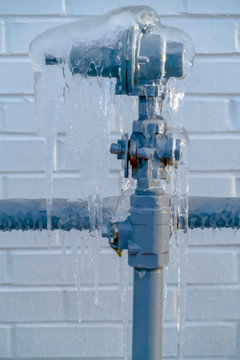Protect Against Frozen Pipes in Winter: Pro Strategies
Call TodayWere you hunting for info concerning How to Prevent Your Pipes From Freezing?

Winter can damage your plumbing, especially by freezing pipelines. Below's how to prevent it from taking place and what to do if it does.
Introduction
As temperatures decrease, the threat of frozen pipes rises, possibly causing pricey repair work and water damage. Understanding how to stop frozen pipes is vital for house owners in cool environments.
Understanding Frozen Pipes
What triggers pipelines to freeze?
Pipes freeze when exposed to temperatures listed below 32 ° F (0 ° C) for expanded durations. As water inside the pipelines ices up, it increases, taxing the pipe wall surfaces and possibly triggering them to rupture.
Risks and problems
Icy pipelines can result in water system disturbances, home damage, and expensive repairs. Burst pipelines can flood homes and cause substantial architectural damage.
Signs of Frozen Piping
Determining frozen pipes early can stop them from rupturing.
How to recognize frozen pipelines
Search for lowered water flow from taps, unusual smells or sounds from pipes, and noticeable frost on exposed pipes.
Avoidance Tips
Insulating prone pipelines
Wrap pipes in insulation sleeves or make use of heat tape to shield them from freezing temperature levels. Focus on pipelines in unheated or outside areas of the home.
Heating techniques
Maintain indoor areas effectively heated up, especially locations with plumbing. Open cabinet doors to allow cozy air to flow around pipelines under sinks.
Safeguarding Outdoor Pipes
Garden hose pipes and exterior faucets
Disconnect and drain garden tubes before wintertime. Install frost-proof faucets or cover outdoor taps with protected caps.
What to Do If Your Pipelines Freeze
Immediate actions to take
If you presume icy pipelines, keep taps available to eliminate stress as the ice melts. Use a hairdryer or towels taken in hot water to thaw pipelines slowly.
Long-Term Solutions
Structural modifications
Think about rerouting pipelines away from outside walls or unheated locations. Include additional insulation to attic rooms, basements, and crawl spaces.
Updating insulation
Buy top notch insulation for pipelines, attics, and walls. Correct insulation helps preserve regular temperatures and decreases the danger of icy pipelines.
Conclusion
Stopping icy pipelines calls for proactive measures and quick actions. By recognizing the causes, indicators, and safety nets, property owners can secure their pipes throughout cold weather.
6 Proven Ways to Prevent Frozen Pipes and Protect Your Home
Disconnect and Drain Garden Hoses
Before winter arrives, start by disconnecting your garden hoses and draining any remaining water. Close the shut-off valves that supply outdoor hose bibs and leave the outdoor faucet open to allow any residual water to drain. For extra protection, consider using faucet covers throughout the colder months. It’s also important to drain water from any sprinkler supply lines following the manufacturer’s directions.
Insulate Exposed Pipes
Insulating your pipes is an effective way to prevent freezing. Pipe insulation is readily available at home improvement stores and is relatively inexpensive. Pay close attention to pipes in unheated areas such as the attic, basement, crawl spaces, or garage. Apply foam insulation generously to create a buffer against the cold. You can also wrap your pipes in heat tape or thermostat-controlled heat cables for added warmth.
Seal Air Leaks
Inspect your home for any cracks or openings that could let in cold air. Seal any holes around the piping in interior or exterior walls, as well as the sill plates where your home rests on its foundation. Additionally, make sure to keep your garage door closed unless you’re entering or exiting. Leaving it open creates a significant air leak that can lead to frozen pipes.
Allow Warm Air Circulation
During cold snaps, it’s essential to allow warm air to circulate evenly throughout your home. Leave interior doors ajar to promote better airflow. Open kitchen and bathroom cabinets to help distribute heat consistently around the rooms. If you have small children or pets, be sure to remove any household chemicals or potentially harmful cleaners from open cabinets for safety.
Let Faucets Drip
A small trickle of water can make a big difference in preventing ice formation inside your pipes. When temperatures drop significantly, start a drip of water from all faucets served by exposed pipes. This continuous flow helps prevent the water from freezing. Additionally, running a few faucets slightly can relieve pressure inside the pipes, reducing the chances of a rupture if the water inside does freeze.
https://choateshvac.com/6-proven-ways-to-prevent-frozen-pipes-and-protect-your-home/

I have been very eager about Preventing and dealing with frozen pipes and I am hoping you enjoyed reading my blog post. Sharing is caring. You just don't know, you may be helping someone out. I cherish your readership.
Request Service